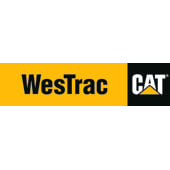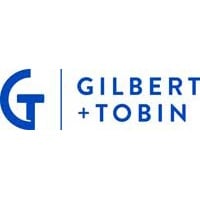

Senior legal counsel | WesTrac





Paul Gregory
Senior legal counsel | WesTrac
Senior legal counsel | WesTrac
WesTrac, a wholly owned subsidiary of Seven Group Holdings, is one of the largest Caterpillar dealers and heavy mobile equipment solution companies in the world. As the senior legal counsel,...
As the regional counsel responsible for Western Australia, I have negotiated the terms and conditions of many of WesTrac’s heavy mobile equipment (HME) supply and mining services contracts with some of the world’s biggest miners. This includes a recently signed five-year regional supply contract with one of the world’s biggest iron ore miners. The negotiation of the contract occurred over approximately two years, and it is anticipated that around A$1.8bn of HME and associated mining services will be transacted.
I have also been responsible for negotiating the terms and conditions for the supply of Caterpillar Autonomous Haulage Solution (AHS) enabled mining trucks to the world’s biggest iron ore miners as they move towards the adoption of “smart mining”. These AHS enabled mining trucks are driverless and operate for 18 to 22 hours per day at optimal efficiency with minimal human intervention, which increases asset life and lowers the total cost of ownership. To date, this includes contracts for the supply of new Caterpillar AHS enabled mining trucks and/or the retrofitting of AHS to existing mining truck fleets for Fortescue Metal Group’s Solomon and Chichester Hub iron ore sites, BHP’s Jimblebar iron ore site and Rio Tinto’s Marandoo and Koodaideri iron ore sites.
It takes time to build strong relationships with business partners and become a trusted adviser. You can accelerate the process by making a conscious effort to understand the commercial drivers for a project or transaction at the outset, as this puts you in a strong position to provide timely advice and recommendations that are consistent with business objectives. Do not be afraid to have an opinion on the options you present; business partners are looking to you for expert guidance and they usually do not want a “passenger” who presents options without direction. They will appreciate well thought-out options, with clear recommendations for the option most consistent with the business objective.
Prioritise the identification and understanding of where a business unit is “leaking” revenue under its current contracts. Work with business partners to see if higher revenues could be achieved as result of a variation or greater compliance with contracts through a minor change to current operations or practices. Business partners will always appreciate contractual advice that results in them being able to upwardly report higher revenues for their respective business unit.
If colleagues, suppliers or customers offer you a site or warehouse visit, always accept where appropriate. The opportunity to see operations first hand and ask questions of those on the floor or working the tools can provide insight into previously unforeseen risks. It will also give you the opportunity to appear more “human”, away from the “stuffy” corporate back-office environment.
WesTrac generates around A$3bn in revenue annually and executes thousands of contracts each year. Those contracts range from one-off low value parts sales based on WesTrac’s standard terms and conditions, to complex, high-value and long-term bespoke mining services agreements with some of the world’s biggest mining, construction and infrastructure companies.
The complexity of these contracts can result in significant contract management resources being devoted to managing the risks associated with them, such as liquidated damages on late supplies, time bars on payment and extension of time claims, and termination on failure to achieve rolling KPIs. Any of these risks can make a low margin project unprofitable. WesTrac is currently exploring the implementation of new contract management solution software to free up resources and mitigate the risks associated with contract management across the contract lifecycle.
A lawyer’s mind-set must shift when moving in-house for the first time. Your employer will no longer use the time you bill as a “fee earner’”as the primary means to measure your performance. Rather, your employer will consider you a “cost centre” and measure you by the actual value you can demonstrate that you add to a project. As an in-house lawyer, you will be in the best position to add the most value to an organisation if you the time to learn about your employer’s business, its products, its customers, the market and the key drivers.
Make time for your professional development. This means more than just attending compulsory CPD sessions and/or a completing a traditional Master of Laws. Technical legal competence is a necessity, but many early career in-house lawyers could benefit from accelerating the building of their commercial acumen. Formal studies such as a diploma in applied corporate finance or an MBA may help. However, in my experience one of the best ways to accelerate your learning is to get a governance or commercial role within your organisation. Acting in these roles will often get you a seat at the table with the executive, which will give you the opportunity to observe and deliberate on the key commercial and operational issues facing the organisation.
As autonomous haulage truck fleets spend more time “in the dirt” at Western Australia’s major iron ore mine sites, more miners are considering introducing them into their operations. The adoption of this technology is a game changer, but it is not without risk. Mitigation of known risks, is vital to ensure a smooth transition.
Establishment costs can be significant and may be prohibitive for miners without the requisite scale. Prior to committing, undertake a thorough feasibility study and consider a pilot trial. Network strength and reliability can be an issue in remote mine sites and are an essential pre-requisite to continuous and safe autonomous operations. Also consider cyber risks and data governance. Hardware and software reliability issues can cause significant disruption to operations and consequential losses (including lost production) and are customarily excluded from supply contracts and licences. To mitigate these risks, include appropriate minimum service levels, KPIs and warranties in contracts and licences. Demand for training on operating autonomous equipment is currently outstripping supply. Consider including initial and ongoing on-site and off-site training requirements in supply contracts. Consider whether existing truck operators and other affected staff can be retrained and redeployed to other roles, including to the autonomous command centre, to mitigate any redundancy costs or negative effect on morale and reputation.